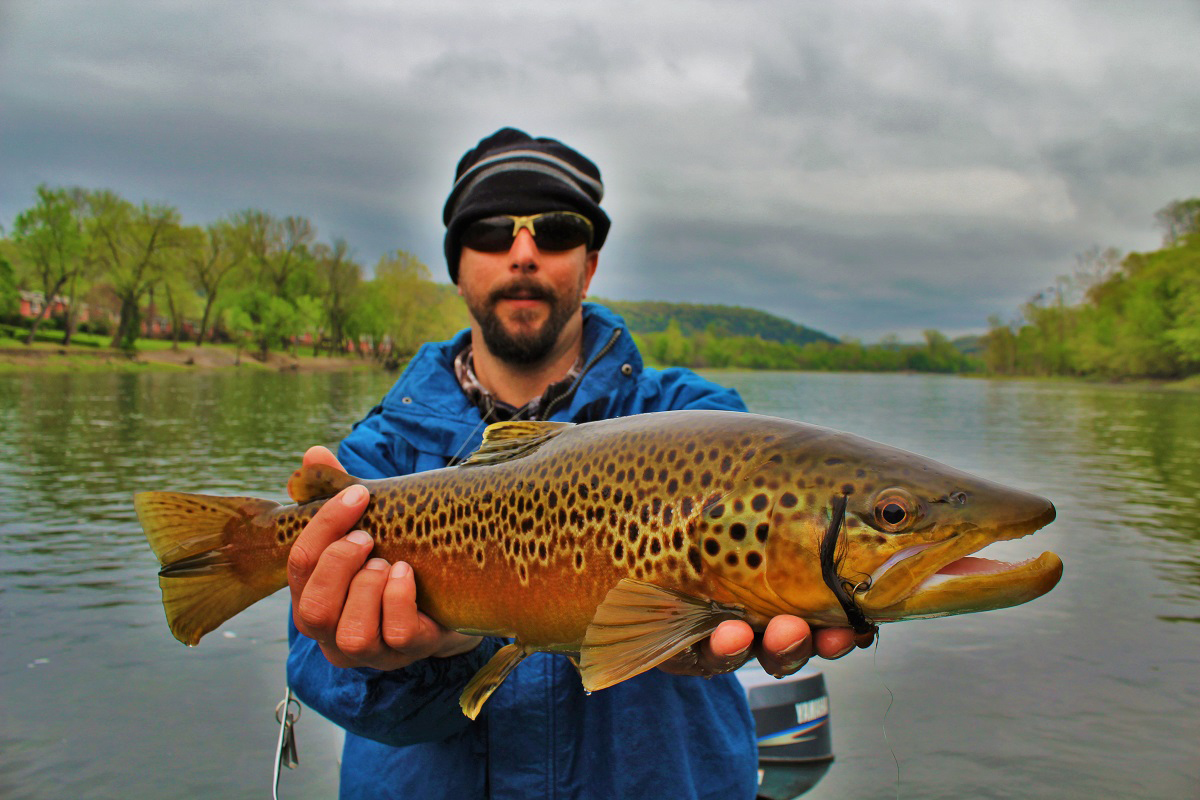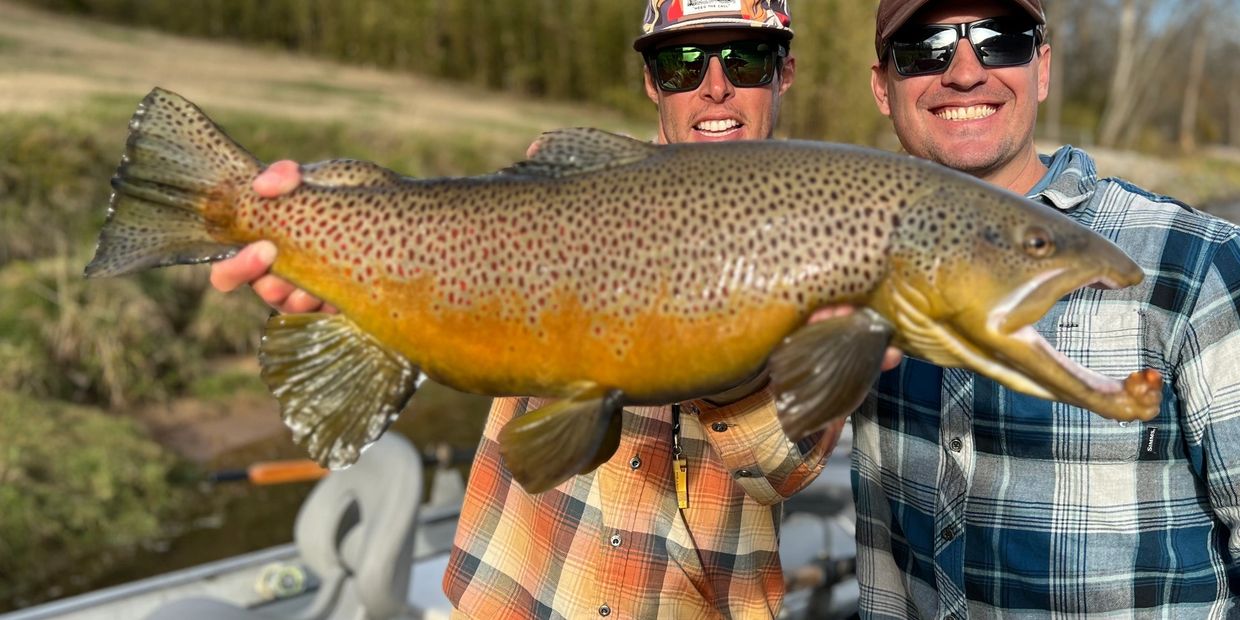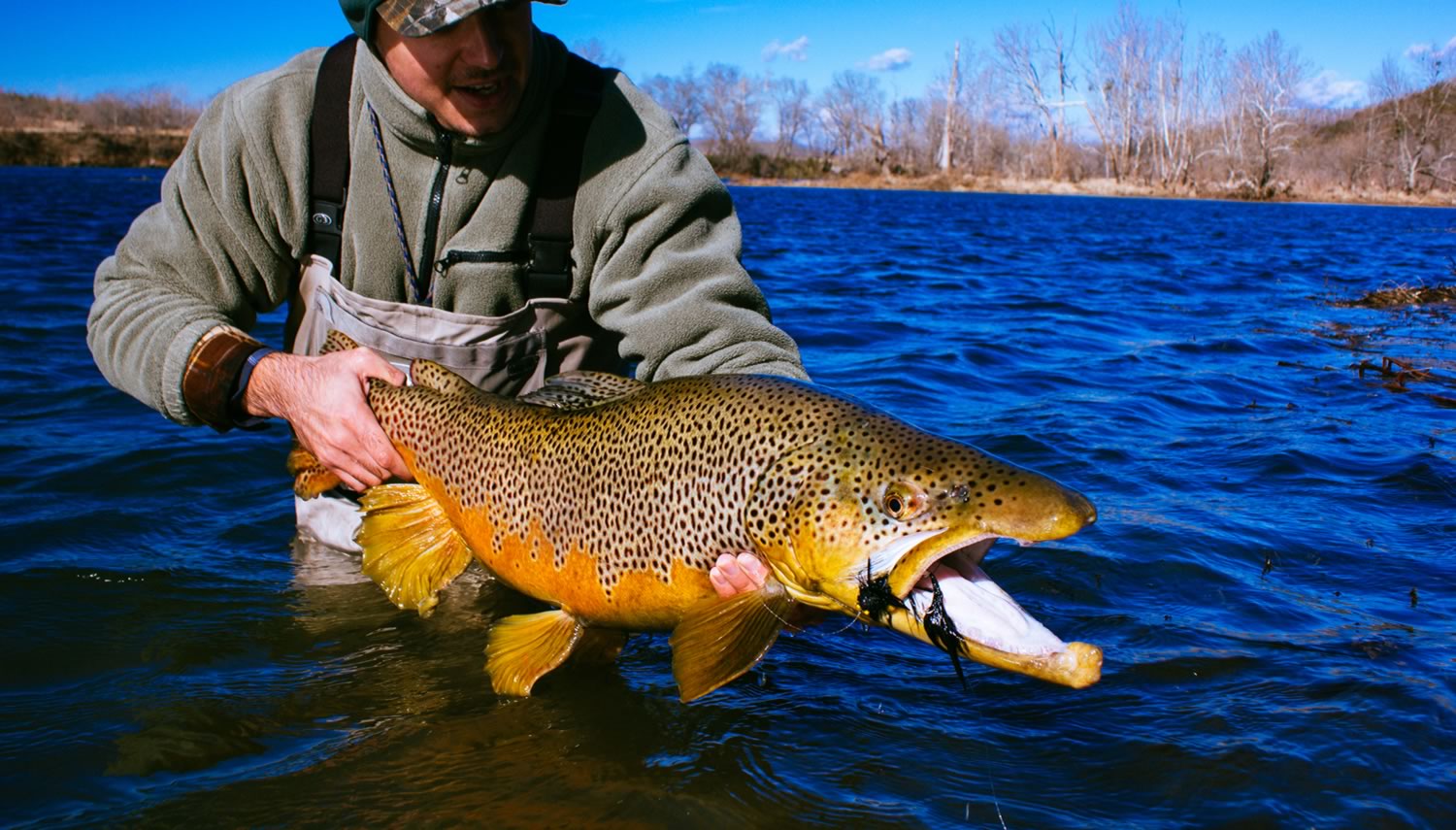
Are you a fishing enthusiast looking for a thrilling adventure in the great outdoors? Look no further than the White River in Arkansas. Known for its abundance of trout and picturesque scenery, the White River offers a unique bank fishing experience that is bound to leave you with unforgettable memories.
Bank fishing on the White River can be both challenging and rewarding. With its crystal clear waters and diverse fish population, this river is a dream come true for anglers of all skill levels. Whether you’re a seasoned pro or a beginner, the White River offers endless opportunities to hook a trophy-sized trout.
When it comes to bank fishing on the White River, preparation is key. Start by familiarizing yourself with the different species of trout that inhabit the river, such as rainbow trout, brown trout, and cutthroat trout. Each species requires a different approach and technique, so it’s important to do your research beforehand.
One of the most effective techniques for bank fishing on the White River is using live bait. Whether it’s crawfish, minnows, or worms, using live bait will attract the attention of hungry trout and increase your chances of success. Additionally, make sure to use the right fishing gear, including a lightweight fishing rod, a sturdy reel, and strong fishing line, to handle the powerful trout that inhabit the river.
Tips for Successful Bank Fishing on White River Arkansas
Fishing on the White River in Arkansas can be an exciting and rewarding experience. Whether you’re a seasoned angler or a beginner, here are some tips to help you have a successful bank fishing trip:
- Do your research: Before heading out, gather information about the White River. Learn about the different fish species found in the area, their habits, and the best times to catch them.
- Pack the right gear: Make sure to bring appropriate fishing gear and equipment. This may include rods, reels, lines, hooks, bait, and tackle boxes. Additionally, don’t forget to pack essentials such as sunscreen, insect repellent, and water bottles.
- Choose the right spot: Explore the riverbank and find a suitable spot to set up your fishing spot. Look for areas with structure, such as fallen trees, rocks, or deep pools, as fish often congregate around these features.
- Observe the water conditions: Pay attention to the water conditions, such as water clarity, weather patterns, and water flow. These factors can greatly influence fish behavior and the type of bait and techniques you’ll need to use.
- Use the right bait and lures: Match your bait and lures to the fish species you’re targeting. Common bait options for the White River include live bait such as worms, minnows, or crickets, as well as artificial lures like spinners, jigs, or soft plastics.
- Practice proper casting technique: Mastering your casting technique is essential for accuracy and distance. Practice different casting techniques, such as overhead casting, sidearm casting, or roll casting, to improve your chances of success.
- Be patient and observant: Fishing requires patience, so be prepared to spend some time waiting for a bite. Stay alert and watch for any signs of fish activity, such as jumping or splashing. Additionally, be aware of any changes in the environment that may indicate the presence of fish.
- Stay safe on the river: Always prioritize safety while fishing on the White River. Wear a life jacket, especially if you’re wading in the water. Be cautious of slippery rocks and fast currents, and avoid areas with strong river flows.
- Practice catch and release: Help preserve the White River’s fish population by practicing catch and release. If you do catch a fish, handle it gently and release it back into the water as quickly as possible.
- Enjoy the experience: Lastly, remember to enjoy the experience of fishing on the White River. Take in the beautiful scenery, appreciate the wildlife, and embrace the peacefulness of being in nature.
By following these tips, you can increase your chances of having a successful and enjoyable bank fishing trip on the White River in Arkansas.
Choosing the Right Spot
When bank fishing on the White River in Arkansas, selecting the right spot is crucial for a successful fishing trip. Here are some tips and techniques to help you choose the perfect location:
1. Research the area
Before heading out to the White River, it is essential to do some research. Look for information on the water levels, current conditions, and recent fishing reports. This will give you an idea of where the fish are biting and what type of fishing you can expect.
2. Look for structure
One key factor to consider when choosing a spot is the presence of structure in the water. Look for areas with rocks, logs, or submerged vegetation. These structures provide shelter and hiding spots for fish, making them more likely to gather in those areas.
Additionally, look for areas where the depth changes or where the current flow is disrupted. These changes in the underwater topography can create prime feeding spots for fish.
3. Consider the time of day
The time of day can also influence where the fish are located. In the early morning and late evening, fish are more likely to be near the shoreline as they search for food. As the sun rises and sets, they tend to move into deeper water. Keep this in mind when choosing your spot and adjust accordingly.
Pro tip: If you’re planning to fish during the day, consider areas with shade, such as overhanging trees or bridges. These shaded spots can be attractive to fish seeking relief from the sun.
4. Look for signs of activity
Observing the water for signs of activity can also lead you to the right spot. Look out for baitfish jumping out of the water or birds diving down to catch fish. These signs indicate that there is food available, and larger fish are likely in the area.
Remember, be patient and willing to move around if you’re not getting any bites. Sometimes, finding the right spot can be a matter of trial and error. With these tips in mind, you’ll be well-equipped to choose the best location for bank fishing on the White River in Arkansas.
Evaluating Water Conditions
When bank fishing on the White River in Arkansas, it is important to evaluate the water conditions to increase your chances of success. The conditions of the water can greatly impact the behavior and feeding patterns of the fish. Here are some factors to consider when evaluating water conditions:
Water Clarity
The clarity of the water can determine how well the fish are able to see your bait. Clear water conditions may require you to use more natural-looking lures that closely resemble the prey of the fish you are targeting. On the other hand, if the water is murky or muddy, you may want to use brighter and more contrasting lures to make them more visible to the fish.
Water Temperature
The temperature of the water can have a significant impact on the fish’s activity level and feeding habits. Different species of fish have different temperature preferences, so it’s important to understand the optimal temperature range for the fish you are targeting. In general, fish are more active and feeding more aggressively in warmer water.
| Species | Optimal Temperature Range |
|---|---|
| Trout | 50°F – 60°F |
| Bass | 65°F – 75°F |
| Crappie | 55°F – 65°F |
Water Flow
The flow of the water can also affect the fishing conditions. In general, fish are more active and feeding more actively when the water flow is moderate. Faster flowing water can dislodge prey and make it easier for fish to feed. Slower flowing water, on the other hand, may require you to use baits that mimic injured or slow-moving prey.
By considering these factors when evaluating water conditions, you can make more informed decisions about your fishing approach and increase your chances of having a successful bank fishing trip on the White River in Arkansas.
Selecting the Best Fishing Gear
When it comes to bank fishing on the White River in Arkansas, selecting the right fishing gear can make all the difference in your success. Here are some tips to help you choose the best gear for your fishing trip:
1. Fishing Rod
Choose a fishing rod that is appropriate for the type of fishing you plan to do. For bank fishing on the White River, a medium to medium-heavy rod with a length of 6 to 7 feet is ideal. Look for a rod with enough power to handle larger fish, such as trout or smallmouth bass, but still sensitive enough to detect bites.
2. Fishing Reel
Pair your fishing rod with a reel that matches its specifications. A spinning reel is generally the best choice for bank fishing on the White River, as it allows for easy casting and versatility. Look for a reel with a smooth drag system and a high line capacity to handle the strong currents of the river.
3. Fishing Line
Choose a fishing line that is strong and durable. Monofilament line is a popular choice for bank fishing on the White River, as it offers good strength and flexibility. Consider the weight of the fish you are targeting and the current conditions when selecting your line. Thicker lines are better for larger fish and fast-flowing water.
4. Fishing Hooks
Use fishing hooks that are appropriate for the size of the fish you are targeting. For trout and smallmouth bass on the White River, a size 6 to 8 hook is usually sufficient. Make sure your hooks are sharp and in good condition to increase your chances of hooking a fish.
5. Bait and Lures
Choose your bait or lures based on the fish species you are targeting. PowerBait, worms, and artificial lures such as spoons and spinners are all effective options for bank fishing on the White River. Experiment with different colors and sizes to find what works best.
Remember to check and follow any fishing regulations and licensing requirements before your trip. With the right gear and some knowledge of the White River’s fishing conditions, you’ll be well-equipped to have a successful fishing trip.
Using Live Bait Effectively

When it comes to bank fishing on the White River in Arkansas, using live bait can be highly effective in attracting fish and increasing your chances of a successful fishing trip. Live bait presents a natural and enticing option that can be irresistible to various species of fish.
Choose the Right Live Bait
Selecting the right live bait is crucial for a successful fishing outing. Different types of fish have different preferences, so it’s essential to consider the species you’re targeting. Some popular live bait options for fishing on the White River include minnows, worms, and crawfish.
Minnows are versatile baits that can be used to catch a wide range of fish, including bass, trout, and catfish. Worms are another excellent option, especially for targeting trout and catfish. Crawfish, on the other hand, are particularly effective for catching smallmouth bass.
Presentation is Key

Once you have selected the right live bait, it’s important to present it in a way that mimics its natural behavior in the water. This can be achieved by using appropriate fishing rigs and techniques.
For example, when using minnows as live bait, you can hook them through the lip or behind the dorsal fin to allow for natural movement. If using worms, threading them onto your hook in a lifelike manner can make them more enticing to fish. It’s worth noting that different species may have different preferences, so it’s a good idea to experiment with different presentations until you find what works best.
Tip: When selecting live bait, make sure it is fresh and lively. Fish are more likely to be attracted to bait that appears healthy and full of energy.
Using live bait effectively can significantly enhance your chances of a successful fishing trip on the White River in Arkansas. By selecting the right live bait and presenting it in a natural and enticing way, you can attract a variety of fish species and increase your overall fishing success.
Mastering the Technique of Casting
When bank fishing on the White River in Arkansas, one of the most important skills to master is the technique of casting. Proper casting not only allows you to reach the best fishing spots but also ensures accurate and controlled presentation of your bait or lure to the fish. Here are some tips to help you improve your casting technique:
- Choose the right rod and reel combo: Selecting the appropriate fishing gear is crucial for successful casting. A medium-weight spinning rod and reel combo is suitable for most bank fishing scenarios on the White River. Ensure that your equipment is well-balanced and comfortable to handle.
- Use a good quality line: Opt for a monofilament or fluorocarbon fishing line that has the appropriate pound test for the type of fish you are targeting. A good quality line will have minimal memory and provide better casting distance and accuracy.
- Practice your casting motion: Stand with your feet shoulder-width apart, facing your target area. Hold the rod with a firm grip and bend your casting arm at the elbow. Smoothly bring the rod back behind your shoulder, then drive it forward with a wrist flick, releasing the line at the right moment to achieve the desired casting distance.
- Pay attention to your line management: During your cast, make sure to keep an eye on your line and prevent it from tangling. Avoid casting against the wind, as it can cause your line to get tangled in nearby trees or bushes. If you notice any tangles or knots, take the time to fix them before continuing.
- Practice different casting techniques: Experiment with various casting techniques such as sidearm casts, overhead casts, roll casts, and flipping to improve your casting versatility. Each technique has its advantages and is suited for different fishing situations.
- Learn to cast accurately: Casting accuracy is key when targeting specific areas or structures along the shoreline. Practice casting towards targets such as fallen logs, submerged rocks, or undercut banks to improve your aim and precision.
- Stay patient and persistent: Mastering the technique of casting takes time and practice. Be patient with yourself and don’t get discouraged if your first attempts aren’t perfect. With consistent practice and dedication, you will gradually improve your casting skills and become a more successful angler on the White River.
By following these tips and practicing regularly, you can enhance your casting technique and increase your chances of catching fish while bank fishing on the White River in Arkansas. Remember to always obey fishing regulations, respect the environment, and have fun while enjoying this beautiful river!
Q&A:
What is the White River in Arkansas known for?
The White River in Arkansas is known for its excellent fishing opportunities, particularly for trout. It is one of the top trout fishing destinations in the United States.
What are some tips for bank fishing on the White River?
When bank fishing on the White River, it is important to use light tackle and 4-6 pound test fishing line. It is also recommended to use live bait, such as worms or minnows, for the best results. Additionally, finding areas with structure, such as submerged rocks or fallen trees, can increase your chances of catching fish.
What are the best techniques for bank fishing on the White River?
One of the most effective techniques for bank fishing on the White River is using a drifting technique. This involves casting your bait upstream and allowing it to drift naturally with the current. Another technique is bottom fishing, where you sink your bait to the riverbed and wait for fish to bite. Lastly, using small spinners or jigs can also be successful in attracting fish.
What types of fish can be caught in the White River?
The White River is home to a variety of fish species, but it is most famous for its trout population. Rainbow, brown, and cutthroat trout are commonly caught in the river. Other species that can be caught include smallmouth bass, walleye, and catfish.
Are there any restrictions or regulations for fishing on the White River?
Yes, there are regulations in place for fishing on the White River. Anglers must have a valid fishing license, and there are limits on the number and size of fish that can be caught. It is important to familiarize yourself with these regulations before going fishing to ensure compliance.
What is the best time of year to fish in the White River in Arkansas?
The best time of year to fish in the White River in Arkansas is during the spring and fall months when the weather is cooler and the fish are more active. However, fishing can be successful year-round depending on the species you are targeting and the techniques you are using.
What are some recommended fishing spots along the White River in Arkansas?
Some recommended fishing spots along the White River in Arkansas include Bull Shoals Dam, Rim Shoals, Wildcat Shoals, and Crooked Creek. These areas are known for their abundance of fish and provide great bank fishing opportunities.